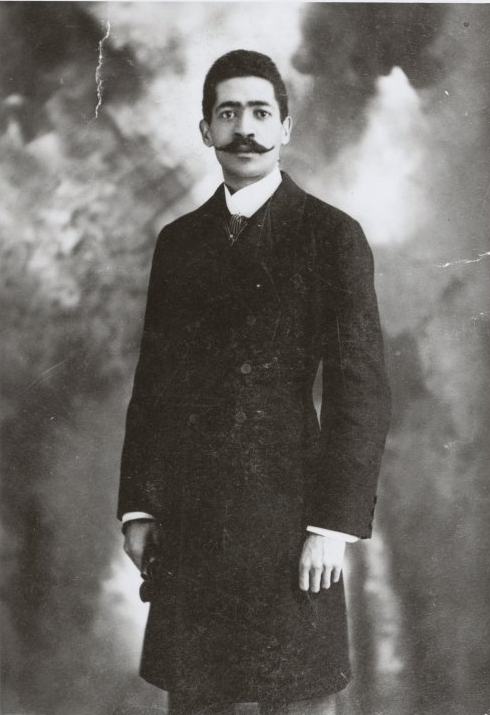
Precursors of Ragtime 1
Coon songs were among many varieties of ethnic-themed comic songs popular in vaudeville and musical theater in the United States from roughly the 1880s to the 1920s. The targeted ethnic minority was African Americans. Coon songs were typically performed by Whites, often in blackface, and Blacks in minstrel shows. The stage dialect they employed was supposed to imitate Black Americans' speech and drew upon a repertoire of crude racial stereotypes conventionalized in blackface minstrelsy.
Coon songs are generally in 2/4 time, consisting of a four-bar introduction and two-bar vamp ![]() SIDE NOTEIn jazz and popular music, vamp is a short, simple introductory passage, usually repeated several times until otherwise instructed. followed by two or three verses and a 16-bar chorus. As exemplified in " All Coons Look Alike to Me ," some of their choruses contain syncopated rhythm patterns. Coon songs were the first publications to bear the label ragtime (Berlin, 1985, 71). Many well-known songwriters, such as Ernest Hogan (1865-1909), Will Marion Cook (1869-1944), "Bob" Cole (1868-1911), the Johnson brothers (J. Rosamond , 1873-1954, and James Weldon, 1871-1938), Bert Williams (1874-1922), and George Walker (1873-1911) contributed to the genre.
SIDE NOTEIn jazz and popular music, vamp is a short, simple introductory passage, usually repeated several times until otherwise instructed. followed by two or three verses and a 16-bar chorus. As exemplified in " All Coons Look Alike to Me ," some of their choruses contain syncopated rhythm patterns. Coon songs were the first publications to bear the label ragtime (Berlin, 1985, 71). Many well-known songwriters, such as Ernest Hogan (1865-1909), Will Marion Cook (1869-1944), "Bob" Cole (1868-1911), the Johnson brothers (J. Rosamond , 1873-1954, and James Weldon, 1871-1938), Bert Williams (1874-1922), and George Walker (1873-1911) contributed to the genre.
Ernest Hogan was one of the very first composers to write and launch the fad of the coon song craze through his syncopated songs "Pas Ma La" and " All Coons Look Alike to Me" The stereotyping of Black Americans in the popular culture-see the cover of Hogan's "All Coons Look Alike to Me" shown below, did not, of course, begin with coon songs. According to Professor James H. Dorman:

La Pas Ma La by Ernest Hogan (1895, Ragtime piano) [ 00:00-00:00 ]
The British music halls of the eighteenth century occasionally introduced comic Black figures, some of which were exported to Colonial America where, through the process of "ascription," a set of assumptions about Black characters would come to be accepted as form of reality. Incidentally, the first English ballad opera to be published in America, Andrew Barton's The Disappointment: or the Force of Credulity [1767], featured a Black character-notably, he was called "Raccoon" ![]() SIDE NOTEThis quote is a wealth of knowledge. For one, the character called "Raccoon", as mentioned in the lesson, is where the term "coon" originates, and we see this character in one particular well-known Disney film, namely Snow White and the Seven Dwarfs (1937). At 02:30 the song ("Whistle While You Work") is not syncopated but rather genteel-like. Certain animals are assisting Snow White work. Then it transitions, and at 02:46 the song is performed with syncopation. And what is most interesting, as it relates to this topic, is the use of "raccoons" washing at the lake in a syncopated manner. Perhaps something like this can be added to this section to show the reader how subtle, but yet still uses vestiges of Blackface. -who sang a version of what would become our own "Yankee doodle." Within two years a second Black character role-that of "Mungo" in Isaac Bickerstaff's The Padlock-afforded a rather different image of Blacks: that of the suffering slave.
SIDE NOTEThis quote is a wealth of knowledge. For one, the character called "Raccoon", as mentioned in the lesson, is where the term "coon" originates, and we see this character in one particular well-known Disney film, namely Snow White and the Seven Dwarfs (1937). At 02:30 the song ("Whistle While You Work") is not syncopated but rather genteel-like. Certain animals are assisting Snow White work. Then it transitions, and at 02:46 the song is performed with syncopation. And what is most interesting, as it relates to this topic, is the use of "raccoons" washing at the lake in a syncopated manner. Perhaps something like this can be added to this section to show the reader how subtle, but yet still uses vestiges of Blackface. -who sang a version of what would become our own "Yankee doodle." Within two years a second Black character role-that of "Mungo" in Isaac Bickerstaff's The Padlock-afforded a rather different image of Blacks: that of the suffering slave.
It was not until the late 1820s however, that a true stereotype began to develop on the American stage: the comic rustic song and dance figure introduced by Thomas Dartmouth Rice in the form of the character known as "Jim Crow" (Dorman 1988, 450-451).






